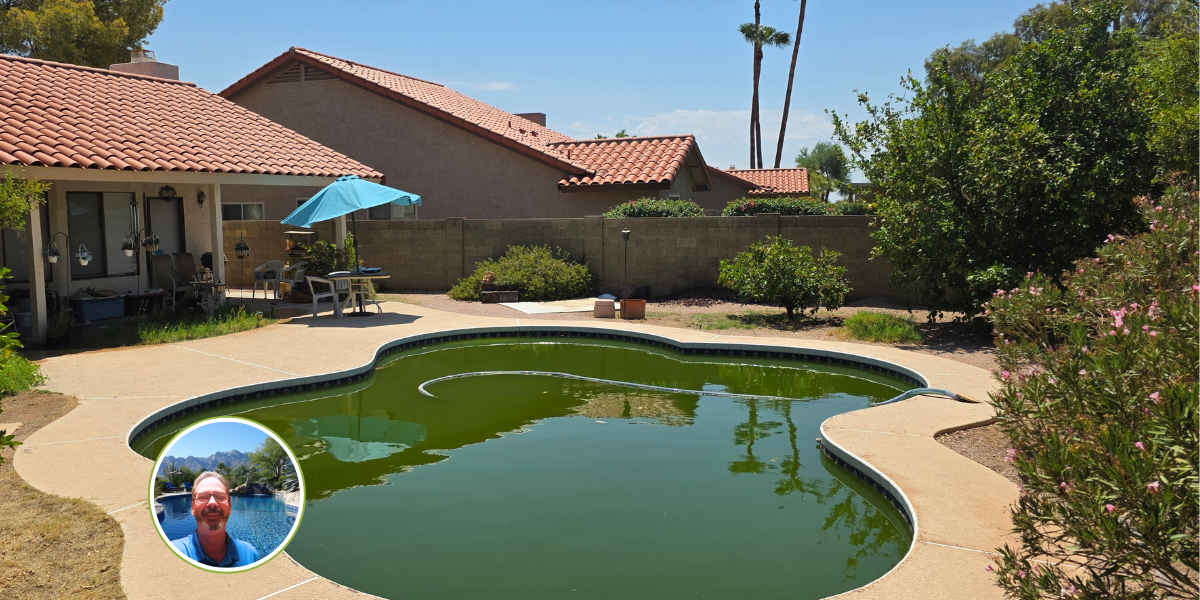Changing the Water in Your Arizona Pool
Arizona’s hard water causes calcium buildup and stains that can ruin your pool. Learn when to change your pool water and why an acid wash may be the solution.

Introduction
Owning a swimming pool in Arizona is both a luxury and a necessity during scorching summers. However, the desert climate also poses unique challenges for pool maintenance. One of the most overlooked aspects of pool care is knowing when to change the water. Unlike cooler climates where evaporation is minimal, Arizona pools lose water constantly to heat and dry air. Over time, the water quality deteriorates, minerals accumulate, and the surface of your pool can suffer. Changing your pool water and considering an acid wash are vital steps in keeping your pool safe, clean, and visually appealing.
Why Arizona Pools Require More Frequent Water Changes
Pool water isn’t meant to last forever. Even with regular chemical balancing, Arizona’s extreme conditions accelerate the breakdown of water quality. Chlorine and other sanitizers lose their effectiveness over time, leading to increased bacteria, algae, and murky water.
In Arizona, most pool professionals recommend draining and refilling your pool every 2–3 years. Waiting longer can cause significant water chemistry issues, leaving you fighting an uphill battle with scale, algae, and stained surfaces.
Calcium Buildup: The Silent Pool Problem
Arizona water is notoriously hard, filled with calcium and other minerals. As your pool water evaporates, these minerals remain behind and gradually build up. The result? Unsightly white calcium deposits on tile, waterlines, and pool equipment.
Calcium buildup isn’t just cosmetic. Over time, deposits:
- Clog filtration systems and reduce water circulation.
- Damage pool heaters and pumps, causing expensive repairs.
- Etch plaster and surfaces, weakening your pool’s structure.
Regular brushing and chemical balancing can slow calcium buildup, but they can’t eliminate it entirely. Eventually, the only way to restore balance is to drain the pool and start with fresh water.
Acid Washing: When It Becomes Necessary
If your pool surface looks stained, discolored, or rough to the touch, it may be time for an acid wash. This process involves draining the pool and applying a diluted acid solution to the plaster or pebble finish. The acid strips away a thin layer of material, removing calcium deposits, algae stains, and embedded dirt.
Reasons to Acid Wash Your Pool Surface:
- Heavy calcium scaling that can’t be brushed away.
- Persistent algae stains that resist normal treatments.
- Discoloration caused by years of chemical exposure and sun damage.
- Aesthetic restoration, giving your pool surface a like-new appearance.
It’s important to note that acid washing is not something you do regularly—it removes a thin layer of plaster each time. Most pools can handle acid washing every 5–7 years, but it should always be evaluated by a professional to avoid unnecessary damage.
Is your pool water overdue for a change or your surface showing calcium buildup and stains? Contact us today for a professional evaluation, water change, or acid wash—keep your Arizona pool sparkling, safe, and swim-ready year-round!
Steps for Draining and Refilling Your Pool
Changing your pool water should always be done carefully, especially in Arizona’s extreme climate. Draining a pool during peak summer heat can crack plaster or cause surface damage. The best times to schedule a drain and refill are spring or fall when temperatures are milder.
Here’s the general process:
- Check for groundwater issues – Ensure the water table isn’t too high, which can cause structural damage during draining.
- Drain the pool safely – Use a submersible pump and follow city regulations for where the water can be discharged.
- Acid wash if needed – Have a professional evaluate whether your pool surface requires treatment before refilling.
- Refill with fresh water – This resets your pool chemistry and removes accumulated minerals.
- Balance chemicals properly – Start with clean water and carefully reintroduce sanitizers, pH balancers, and stabilizers.
Preventing Future Problems
While water changes and acid washes are sometimes unavoidable, preventative care can extend the life of your water and your pool surface:
- Regularly test water chemistry and maintain balanced levels.
- Install a water softener or pre-filter system to reduce calcium levels during refills.
- Brush your pool surfaces and tiles weekly to prevent early buildup.
- Schedule professional inspections every year to catch issues before they escalate.
Conclusion
Arizona pool ownership comes with unique responsibilities, and water management is at the top of the list. Changing your pool water every few years and addressing calcium buildup are essential steps to maintaining a healthy and inviting swimming environment. If calcium deposits, stains, or discoloration have taken hold, an acid wash may be the most effective way to restore your pool’s beauty.
Taking a proactive approach to water quality not only extends the life of your pool equipment and surfaces but also ensures your swimming experience remains safe, comfortable, and crystal clear year-round.
Is your pool water overdue for a change or your surface showing calcium buildup and stains? Contact us today for a professional evaluation, water change, or acid wash—keep your Arizona pool sparkling, safe, and swim-ready year-round!
